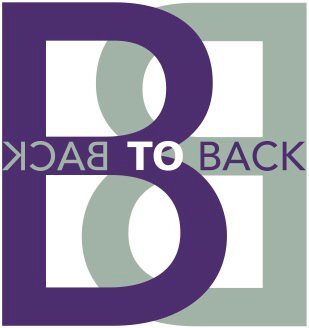Hypermobility Spectrum Disorder and Ehlers-Danlos Syndrome
Hypermobility is often a general term given to those whose bodies are able to move and stretch more than is considered for the normal range of motion. In this blog I will mainly talk about the musculoskeletal (MsK) presentations of this disorder. You can get this at a local joint level or more generalised global joint level. Further reading can be from the EDS society.
Over the years in the UK, specialists like Rodney Grahame started to make the suggestion that for some, being hypermobile, could be a problem. He and his team noted there seemed to be a link between flexible or very flexible people and pain. He felt that it was often overlooked and that so much of the time these patients were being misdiagnosed and so mismanaged.
In the earlier days of diagnoses, Hypermobility Syndrome (HMS) was the name given to patients whose joints moved outside their normal range and also had pain. Diagnostic criteria such as the Beighton and Brighton scores were used. HMS was also called Hypermobility Type 3, which was part of the larger syndrome of connective tissue disorders called Ehlers-Danlos Syndrome or EDS.
Over time and with increased awareness, further understanding and renewed research, the original diagnostic thoughts are still used, with the additional of new criteria. The diagnosis given to patients has also changed and been broken down to more specific Hypermobility Spectrum Disorder (HDS) or Hypermobile EDS (hEDS). There are differences to each of these…
The main differences between HDS and hEDS are beyond the need for this paper and the differences need to be thoroughly looked at by a doctor/osteopath/physiotherapist/chiropractor with an interest in this area before a complete diagnosis is given. Having the correct diagnosis and treatment plan is more important that giving patients labels.
In a nutshell, and from a MsK point of view, both HSD and hEDS can make tissues more vulnerable to overstrain and injury. It can be painful, extremely frustrating and lead to fear and anxiety. I also think it is important to add here that pain is so much more complex than we used to think and it is not just a measure of increased pain equals more tissue damage.
Diagnosis
The diagnosis of HDS/EDS needs to be from a medical doctor or a qualified practitioner such as a registered osteopath, physiotherapist or chiropractor with a specialist interest.
A thorough case history, family history and examination needs to be completed to get a full understanding as to why the patient is suffering and to make a comprehensive diagnosis. The list of signs and symptoms linked to HSD/hEDS can be extensive.
A look at the conditions
For some with HSD or hEDS the symptoms could be at all levels of the spectrum from the very mild to more severe and/or all levels in-between.
A list of signs and symptoms could be long and could be widespread, but it covers chronic muscle, tendon, ligament or joint pain. This pain is often (although not always) relieved by rest. Ankles that sprain easily, clicky joints, a jaw that clicks. It may have been an incident (such as an ankle sprain) that his triggered a set of symptoms. Patients with HDS/hEDS are often clumsy, may get foggy thought patterns and fatigue more easily that others. Other symptoms that can coexist are palpitations, abomination concerns, anxiety, POTS (postural orthostatic tactical syndrome) or mast cell activation syndrome (MCAS).
Osteopathic TT for treatment for the severe HSD/hEDS patient ideally needs a team of like minded practitioners that address the needs of the patient.
From my point of view, Msk treatments need to be aimed at giving some pain relief and giving the patient strategies to manage their pain and movement patterns. I tend to avoid giving patients stretching to do as I feel that this could lead to more instability going forwards. This can lead to more chronic muscle tightness and pain as the body tries to protect itself by creating more tightness to stabilise itself.
I feel that osteopathy is great at providing relief for pain using gentle treatments and manipulation and some acupuncture. The more this is layered in with a gradual and progressive exercise programme to increase the patients capacity the better.
HDS/hEDS patients are a tough population to work with as there can be many bumps in the road of the journey. Just as they feel better, something else can start to become aggrieved. So, it is for this reason, that I feel that education for the patients is so key. For them to understand that pain is not always dangerous, it is just a message that is important. They need to be treated as a whole. They also need to also be aware of how vulnerable their bodies can be to changes that try to occur over and above the rate at which their body can adapt. Bodies can and do adapt. Those with HSD or hEDS can take longer to gain more capacity and resilience.
As our bodies gain greater capacity, they are able to deal with more. That is what strength and control is all about. Stretching does not give you greater ability to lift things in the garden or to bend to lift your child off the floor. Strength does!
From a movement point of view, aiming for efficiency and balance is useful so that one part of ones body is not talking all the hit for something else that is not working. Gait assessment can be useful to see what part of the patients gait makes the rest of their system struggle.
I often use the expression that I want people to have ‘reactive bodes’. What I mean by this is your bodies move and your muscles react to the movement. This sort of goes away from the ‘bracing’ model (unless you are picking 100kgs off the floor!!), which I am not sure I agree with.
By bracing or ‘pre-tensioning’ our body, it does not allow our body to move as it should and it isolates certain areas. Our bodies are amazingly integrated. When we move, no muscle EVER works by itself and so I am not sure how useful it is to isolate muscles when we exercise.
If you use a ‘Clam’ exercise as an example. This is when we lie on our side and lift the top leg up and down to ‘isolate’ and work your gluteus medius muscle. First of all, this muscle NEVER, ever works by itself when we move. But also, depending on your size and weight, the weight of your leg is not even close to what is needed to walk, run and squat etc. This muscle works as part of a ‘team’ of muscles and so are all best served working together as this is what happens when we move.
Having HDS/hEDS can certainly put challenges in front of you. There can be a few or many bumps along the road. But it does not mean that you cannot have a full life. As with many medical problems having a good mindset, a thorough understanding and having good capacity in your body all just helps. It is also ok to be frustrated with your body at times. Having a great bunch of people around you too massively helps.
Blog post by James Dodd


